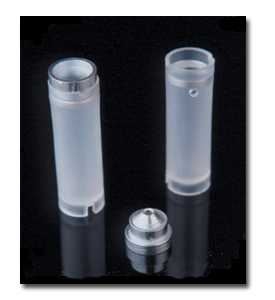Sample support
Only 2 sample holder systems (see below) will be accepted on the ESRF MX beamlines. It will no longer be possible to accommodate samples mounted with plastic bases (i.e. Hampton CrystalCaps and similar) or those mounted in Oxford-style top-hat systems.
In any case you are strongly recommended to bring an empty loop with your samples to prepare the sample environment correctly on the beamline before you start working on your precious samples.
-
EMBL/ESRF Sample Changer Vials
In order to be compatible with the EMBL/ESRF sample changer which is now installed on all our beamlines, you must use the SPINE standard sample holders and vials. Its design is based on the Hampton CrystalCap Magnetic™ and vial system with 22mm fixed sample holder length (18mm pins) and presents a 10 character identification code (data matrix on the base of the caps and in clear human readable text near the data matrix or on the rim of the cap).
SPINE sample holders and vials can be obtained from either Molecular Dimensions Limited (bottom figure below) or Hampton Research (top figure below)
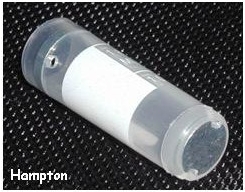
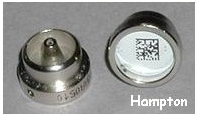
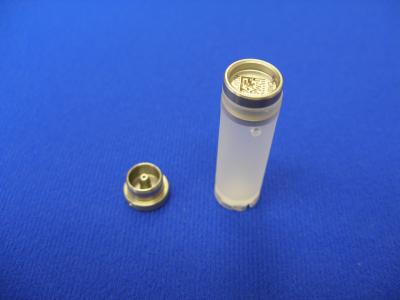
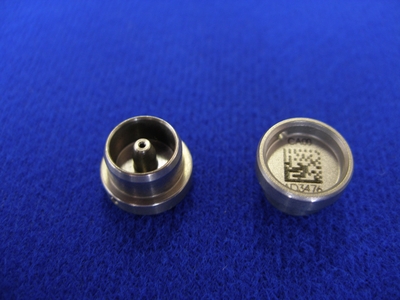
If you want to use the sample changers make sure your vials are not damaged (cracked vials, metal disk missing at the tip of the vial ...)
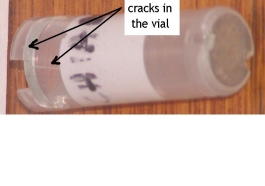
-
Standard holders (commercially available today) for manual sample mounting
-
Puck options
| Beamline | EMBL SPINEpuck | UNIPUCK |
| ID23-1 | yes | yes |
| ID23-2 | NO | yes |
| ID29 | yes | yes |
| ID30A1 MASSIF | NO | yes |
| ID30A3 | yes | yes |
| ID30B | yes | yes |
EMBL baskets hold 10 SPINE sample holders/vials, are identified with a data matrix as well as a human readable code. 5 of them fit in a modified CP100 transport dewar canister (see image bellow). Kits containing a modified CP100 canister, 5 baskets, 1 vial pusher for sample transfer and 1 clamp are sold by MDL.
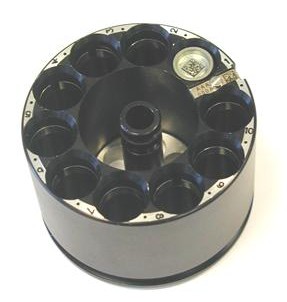
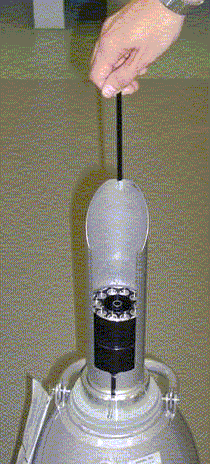
A dry-transporter/shipper must be used to transport the samples safely. The most common one is the Taylor-Wharton CP100 dry shipper (see these articles for more details on temperature measurements: paper1, paper2)
